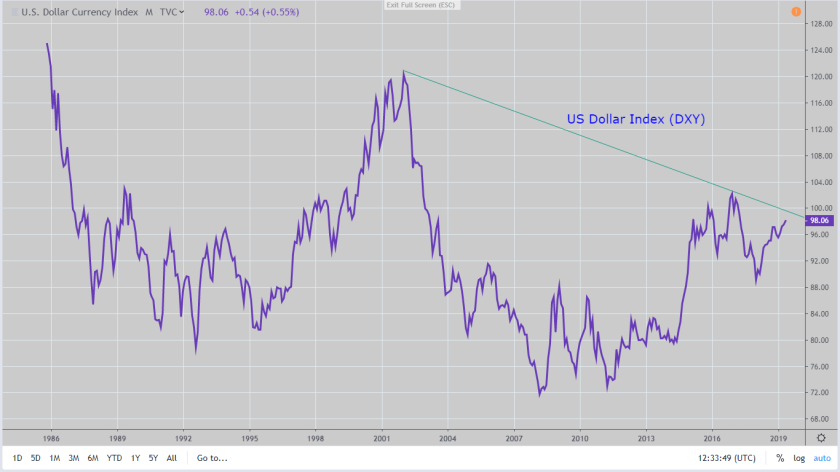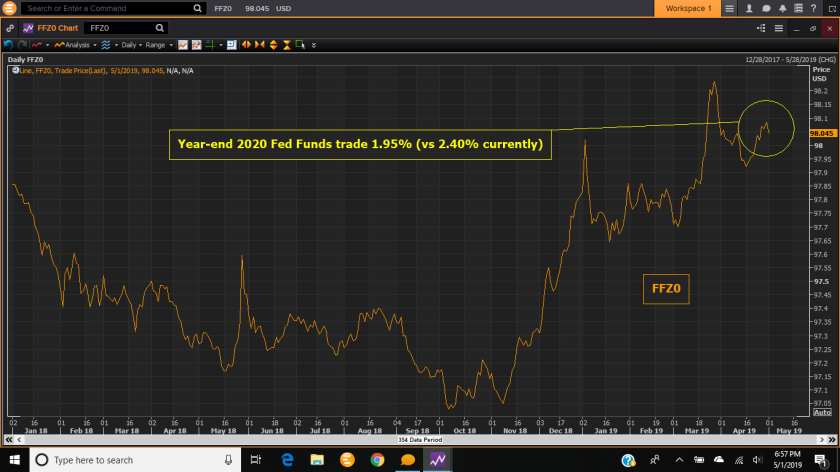May 31,2019
The US dollar yesterday closed at new highs for 2019, and at its best level in two years. It remains a safe haven destination in times of declining global growth and a weak investment climate made worse by seemingly unending trade disputes. The most recent move to impose tariffs on Mexican imports is proof that President Trump is not shy about using this tactic to advance policy. See https://reut.rs/2HLiYYc . Who would be surprised if Europe wasn’t the next target? If this is to be the new normal, traders are quickly coming to realize that many markets are not priced for it.
Two questions here are, can the dollar go higher and what is the impact? The answers are 1) yes and 2) not good.
FX, by nature, is all relative. Outside of the Swiss franc and the Japanese yen which also provide safe havens, there aren’t many currencies that you’d rather own than the dollar right now. Fundamentally, a 2% yield, deep liquidity, and a growing economy look pretty good compared to the mess in most other regions of the world. And export-dependent blocs like Asia-Pacific, Europe, and Latin America really have no choice but to weaken their own currencies to compensate for the hit to their economies from reduced trade.
Technically, the price action in the dollar is extremely bullish. In the short-term, the dollar index (DXY) continues to advance in a positive pattern of higher highs and higher lows. The long-term setup could see the DXY back at the 2002 highs, more than 20% higher from here.
The downside of dollar strength is that it’s likely to accompany, and even thrive on stress in the financial markets. The big dump in commodities benchmarks like copper and oil this week are signs that investors see this coming and are hunkering down. As we’ve written here before, the Achilles heel of the broader marketplace is the credit sector. See “Time to BBBe Careful .” A higher USD would squeeze leveraged dollar debtors, including many banking systems abroad, who are massively and negatively exposed. With half of the investment grade bond market rated BBB and hovering just one notch above junk status, a move up in the dollar could be the trigger that sets those dominoes falling and makes a credit meltdown our next black swan event.








